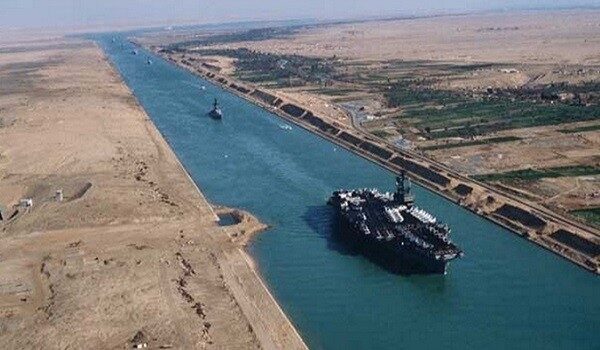The interpretation of the notion of damage in CMR: when fear of loss takes over
In her judgment of 18 December 2019 in a case of international carriage by road of milk products the commercial court of Amsterdam stated on the basis of the national and foreign doctrine that damage within the meaning of the provision of article 17 CMR presupposes a substantial physical change in the condition of the goods. According to the court, this implies that it must first be established that there is actually a substantial physical change in the goods and that the amount of the damage must then be determined.
The court therefore strikes out the interpretation by the cargo interest that the reduced market value/marketability of the goods as a result of the breaking of the seal can as such be regarded as damage within the meaning of the aforementioned provision. In the matter brought before the court, the cargo interest omitted furthermore to substantiate her claim sufficiently.
Although the court accepts that the cargo interest did suffer damage, she points out that this was not damage because the goods were damaged, but damage because the cargo interest cannot take the risk that the goods could have been damaged in a way that is not visible. However, the latter is not damage within the meaning of article 17 of the CMR.
Article 17, paragraph 1 CMR states that the carrier is liable for total or partial loss and for damage to the goods, which occurs between the time of taking receipt of the goods and the time of delivery whereas article 25 CMR determines that in case of damage, the carrier shall be liable for the amount by which the goods have diminished in value, calculated by reference to the value of the goods fixed in accordance with article 23, paragraphs 1, 2 and 4.
However, the notion “damage” is not defined in the CMR Convention itself and the question is therefore what kind of damage the carrier could be responsible for.
M.A. CLARKE argues1:
“In the CMR however, damage is not defined. In the French version, damage is generally “avarie” and the ordinary meaning of that word is “physical harm, or injury to an object”. However, the precise meaning depends on the context in which the word is used. In article 17.1 of the CMR, damage means any change in the physical state of the goods which reduces their value. It even includes wear and tear, although at the end of the day in court this is a kind of damage for which the carrier may be exonerated. It also includes damage which results from delay.
The principle […] is that “damage is characterized by external or internal physical deterioration, which results in diminution of value. Diminution of the value of goods without physical deterioration, however, is not damage; were it otherwise it would be too difficult to distinguish damage from loss of market, for which the carrier Is not liable under the CMR.”
R. HERBER & H. PIPER define damage as follows2:
“Beschädigung ist jede äußere oder innere Veränderung der Substanz des Frachtgutes, die zur Wertminderung führt. Die Veränderungen brauchen nicht irreversibel zu sein; es genügt, dass eine Wiederherstellung des ordnungsgemäßen Zustandes nicht ohne beträchtlichen Aufwand möglich ist.“
Whereas KOLLER3 describes damage as “eine objektiv wertmindernde Veränderung der chemischen, physikalischen oder biologischen Eigenschaften des Gutes“.
All this seems to show that damage to the goods implies at least some impact (in whatever sense) on those goods, as a result of which they can no longer be used for the purpose they were intended.
Without any impact, there never seems to be a case of damage.
In other words economic, political or other market conditions or environmental factors that cause the goods to decrease in value during the journey – but foreign to this transport – cannot constitute damage (recoverable from the carrier).
What exactly – in the absence of a definition in the CMR Convention itself – is required to be able to speak of damage is the subject of many discussions in jurisprudence.
In my view, a clear approach to the concept of damage can be found in a judgment of 30 March 1989 of the OLG Hamburg4, that describes the concept of damage within the meaning of Article 17(1) of the CMR as a “wertverminderende Substanzveränderung des Frachtgutes (..) die es dem Frachtführer zumindest teilweise unmöglich macht, die Güter wie übernommen wieder abzuliefern.”.
In the case submitted to the OLG Hamburg, the so called “Substanzveränderung” was immediately apparent on arrival from the thawed condition of the transported frozen goods .
Where the carrier had taken over of the goods in a frozen state, it turned out that they had thawed during transport.
This defrosting of the frozen goods constituted a “Substanzveränderung” and had a depreciating effect on the goods as thawed goods are different from frozen products, even if they are re- frozen.
The court was of the opinion that the buyer of frozen products cannot be obliged to purchase these goods if they do not correspond to the subject of the purchase contract, unless the seller agrees to a price discount.
Since the goods in question were intended to be marketed as frozen foods, this was no longer possible due to their thawed condition and thus the court decided that there was damage.
The courts must therefore always determine (the proof of) the damage to the goods on the basis of the facts, that, in particular for the presence of migrants in vehicles on the one hand and temperature-controlled transport on the other, has given rise to a carrier strict justice.
After all, in such cases the cargo interests often tend to reject the entire cargo on the basis of a “fear of contamination” or “fear of unsuitability due to incorrect temperature”.
When it is established that there is no 100% absolute certainty that the goods have not been affected, the courts indeed easily decide that there is a case of total loss.
The Antwerp court of appeal for example ruled in a judgment of 12 December 20055 that the damage was indisputably established “since this concerns a shipment of human medicines that can no longer be used and which must be regarded as lost as soon as there is no absolute certainty as to their conformity /quality. The slightest doubt makes them unfit.”
The same court ruled in its judgment of 6 March 20066 in response to the intrusion by migrants as follows: “c) 3. The whole of the goods – being a batch of household foil intended for
packaging and preserving foodstuffs – must therefore, in view of (even the possibility of) contamination with human faeces and urine, be considered unfit for use in the context of human consumption, so that the claimant has rightly refused to take delivery of the goods; After all, with such goods, in view of the extreme nature of the contamination, no risks can and cannot be taken in the field of public health and food safety, even if it cannot be ruled out that certain individual cartons may have escaped contamination; (…)”
The court found that part of the cargo was directly smeared with human excrement, but that this did not prevent the entire cargo from having been exposed to the odour of human excrement and urine for a long time, so that this was a case of extreme contamination.
Moreover, and this ultimately broke the carriers’ defence, their experts were unable to demonstrate that the cargo that had not been directly damaged was still in good condition.
The court states in this regard: “After all, the only thing that the experts of the parties could say about this is that the palettes were ‘apparently unaffected’, but these experts – despite the express request of POLY-LINA LTD. – were themselves unable to confirm and exclude that these goods were actually free from any contamination, in particular with regard to contamination/infiltration by human urine.” whereupon the court, based on a well-founded fear in the present case, decided to regard the entire cargo as damaged.
“If, therefore, as in this case, the hygiene standards and requirements cannot be 100% guaranteed, any use or further marketing of these goods constitutes an unauthorized risk, so that the entire load, taking into account the necessary safeguards for public health and food safety, should be considered a total loss and the claimant has rightly regarded her as a complete loss;”
Case law often refers to or at least makes an allusion to European food law as f.i. Regulation (EC) No 178/2002 of the European Parliament and of the Council of 28 January 2002 laying down the general principles and requirements of food law, establishing the European Food Safety Authority and laying down procedures in matters of food safety.
This regulation requires food business operators to constantly carry out risk assessments during the various stages of production, processing and distribution of the food in order to rule out any health hazards for consumers and defines this risk assessment as “a scientifically based process consisting of four steps: hazard identification, hazard characterisation, exposure assessment and risk characterisation”7
Article 6.2. of this regulation furthermore states that this risk assessment shall be based on the available scientific evidence and undertaken in an independent, objective and transparent manner whereby the precautionary principle, as laid down in article 7, always will be followed.
Take in consideration all these elements, the conclusion should be that the cargo interested party has to proof that a depreciating change of the goods has occurred during transport, as a result of which it is no longer in the same condition/quality as the one they were handed over to the carrier.
The carrier can provide proof by all legal means that no change or depreciation of the goods has occurred and that there is therefore no change in the condition/quality compared to that at the time when he took delivery of the good.
In each specific case, it will therefore have to be checked on the basis of as much objective data as possible whether an initial doubt with regard to the damage to the goods is actually confirmed or is sufficiently justified.
The risk assessment referred to in the Regulation 178/2002 as a scientifically based process, consisting of hazard identification, hazard characterization, exposure estimation and risk characterization, which is carried out in an independent, objective and transparent manner and based on scientific data, can serve as a guideline in this regard.
A fine example of such a thorough risk assessment surfaced in a lawsuit heard by the court of appeal of Versailles over a maritime transport of a container loaded with different cheeses from France to Japan.
Upon arrival of the container, the Japanese consignee made reservations for damage caused by wetting and crushing of 553 boxes on the one hand and for non-compliance with the imposed temperatures during transport on the other.
The Japanese consignee then decided to destroy the entire cargo of cheeses, partly because the cargo that had undergone temperatures of more than 10° C no longer met hygienic standards and was unfit for consumption.
The various survey reports, drawn up on the basis of a contradictory expertise, attributed the wetness to a defect in the sealing of (the roof of) the container and the abnormal temperature rise to a defect or absence of cooling capacity in the ‘reefer’ container during transport.
The maritime carrier neither disputed the existence of wet damage to the 553 cartons nor its responsibility for this, but seriously questioned the impact of the temperature increase during transport on the quality of the cheese products.
In the present case, the temperature records showed a gradual increase in temperature from the 9th day at the end of the afternoon to the 14th day at the beginning of the day, exceeding 10°C for 96 hours, above 15° for 43 hours C and peaked at 20 °C for 7 hours, although the transport had to be carried out under a controlled temperature of 4 °C.
Confronted with this temperature data, the surveyor acting on behalf of the cargo interest concluded in his report that there was a very high probability that all the goods in the container were corroded, requiring them all to be thrown away as they had no commercial value anymore.
In doing so, he invoked, among other things, the precautionary principle referred to above.
In addition, after inspecting the few boxes still available for sampling, which had not been affected by any wetness, he found that the cheeses in some packages had mold and that the cheese had been discoloured yellow with a milky liquid seeped into the packages.
However, an actual bacteriological analysis of the affected cheeses had never taken place.
One of the carrier’s experts argued that he had never received a technical description of the products from the sender of the goods, nor of the reaction of this kind of goods when they had been exposed for 3 days to an environment with a temperature between + 18o C and 20oC.
The carrier’s other expert pointed out that it was up to the consignee of the goods to explain scientifically why an increase above 10 °C would automatically have made the products unsuitable for further commercialization.
Tackled by this (correct) question, the expert of the goods interested party apparently realized that his initial findings may have weighed too lightly and decided to submit the matter to an external specialist in agriculture and agro-industry.
His report copied the findings of the three existing reports and already defined the characteristics of the cheeses.
He also listed the individual rules for storage and risks of spoilage.
His report was further supplemented by the certificates issued by all the manufacturers of the cheeses in question, all of which confirmed the need for constant storage at less than 8°C for one range of cheeses and less than 6°C for the other group.
Storage above this temperature made the cheeses unsuitable for marketing and consumption, according to the manufacturers.
Confronted with his findings the carrier’s experts, apparently had not been able to put forward any technical argument against it.
The expert therefore concluded that « la rupture de la chaîne du froid était importante par son amplitude (différentiel de +12oC par rapport aux maximales de conservation préconisées) et sa durée (plus de 96 heures), ayant pour conséquences une dégradation de la qualité organoleptique ne permettant plus de garantir la stabilité des produits au cours de leur conservation ultérieure et donc leur DLUO, un risque de développement d’une flore pathogène, les températures atteintes dans l’enceinte du container étant proches de l’optimum de croissance des micro-organismes psychotropes parmi lesquels des bactéries dont l’impact est redoutable sur la santé humaine.»
Continuing his reasoning, he underlined that since all goods had been transported in the container under identical conditions and that certain products were in fact already showing signs of spoilage, drawing up a sampling plan and reasonable sorting out of cheeses for control was out of the question.
In his view, a simple analysis of a few samples could never have ruled out the very significant risk to public health due to the temperature deviation at 20 °C, after which he concluded that the decision of the recipient of the goods to destroy the cargo was fully justified.
The court made this sound scientifically substantiated thesis its own and ruled that “under these circumstances” the cargo must be regarded as a total loss.
It is therefore indisputable that in such files lies a special role for experts appointed by the parties, independent laboratories and/or official inspection bodies and that the relevance of article 30, 5 CMR (“The carrier and the consignee shall give each other every reasonable facility for making the requisite investigations and checks”) in these kind of disputes can only gain importance.
Filip MELIS
Solicitor law office MELIS ADVOCATEN
NOTES
1 M.A. CLARCKE, International carriage of goods by road: CMR, Informa, Londen, 2009, p. 224-225.
2 CMR Kommentar, München, 1996, p. 273..
3 I. KOLLER, Transportrecht: Kommentar, Verlag C.H. Beck, Muchen, 2020, 10e edition, p. 311, nr 13, in respect of § 425 HGB being the German counterpart of Article 17(1) of the CMR as well as I. KOLLER, Verlust durch Wertverlust oder Beschädigung durch Lieferfristüberschreitung – Anmerkung zum Urteil des OLG Stuttgart vom 27.11.2019 – 3 U 239/18, TranspR 2020, 11/12, p. 469 (471).
4 TranspR 9-89, p. 321.
5 RHA 2008, 25-38.
6 ETL 2006, p. 429 (439).
7 Article 3, 11.



